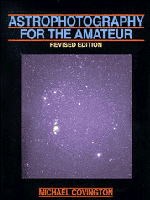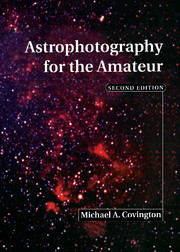How to Use a Computerized Telescope
How to Use a Computerized Telescope describes how to get a computerized telescope up-and-running, and how to embark on a program of observation. Michael Covington explains in detail how the sky moves, how a telescope tracks it, and how to get the most out of any computerized telescope. Packed full of practical advice and tips for troubleshooting, his book gives detailed instructions for three popular telescopes: the Meade® LX200, Celestron^DCC NexStar 5 and 8, and Meade® Autostar^DTM (ETX and LX90).
Michael A. Covington is an associate research scientist at the University of Georgia. He is a computational linguist trained in the computer processing of human language and the computer modeling of human logical reasoning, and a widely recognized expert on the Prolog programming language. He is the author of nine books including Dictionary of Computer and Internet Terms, Seventh Edition (Barron's, 2000), Astrophotography for the Amateur (Cambridge, 1999), PROLOG Programming in Depth (Simon & Schuster, 1996), Cambridge Eclipse Photography Guide (1993), and Syntactic Theory in the High Middle Ages (Cambridge, 1985). A senior member of the Institute of Electrical and Electronics Engineers, Covington is a Contributing Editor to, and former "Q&A" columnist of, Poptronics magazine.
- The very first book about amateur astronomy with computerized telescopes
- Includes detailed instructions for three popular computerized telescopes (Meade LX200, Celestron NexStar 5 and 8, and Meade Autostar [ETX and LX90])
- Supported by the author's website at www.covingtoninnovations.com
Reviews & endorsements
'[Covington] writes clearly and the text is presented in an orderly manner, so that the reader is unlikely to become confused.' The Times Higher Education Supplement
Product details
December 2007Adobe eBook Reader
9780511251993
0 pages
0kg
110 b/w illus. 7 tables
This ISBN is for an eBook version which is distributed on our behalf by a third party.
Table of Contents
- Preface
- Part I. Telescopes in General:
- 1. Welcome to amateur astronomy!
- 2. How the sky moves
- 3. How telescopes track the stars
- 4. Using equatorial mounts and wedges
- 5. Telescope optics
- 6. Eyepieces and optical accessories
- 7. Astrophotography
- 8. Troubleshooting
- Part II. Three Classical Telescopes:
- 9. Three that led the revolution
- 10. Meade LX200
- 11. Celestron NexStar 5 and 8
- 12. Meade Autostar (ETX and LX90).






